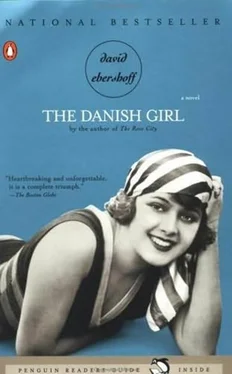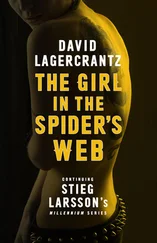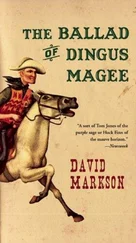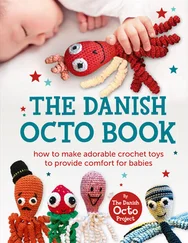The man in the cloak spoke softly, and word spread through the halls of the academy that he was a dealer from Paris. He was wearing a wide-brimmed hat trimmed with a strip of leather, and the students could barely see his eyes. There was a little blond mustache curling down around his mouth, and the faint smell of newsprint falling behind him like exhaust. The acting director of the academy, Herr Rump, who was the less talented descendant of Herr G. Rump, introduced himself to the stranger. Rump escorted the man through the academy halls, where the floors were gray and unvarnished and swept clean by orphan girls not old enough to conceive. Rump tried to halt the stranger in front of the canvases painted by his favorite pupils, the girls with the wavy hair and apple-perky breasts and the boys with the thighs like hams. But the man in the cloak, who was reported to say, although no one could ever confirm it, “I have a tongue for talent,” refused to be swayed by Herr Rump’s suggestions. The stranger nodded in front of the painting of the mouse and the cheese done by Gertrude Grubbe, a girl with eyebrows so yellow and fluffy it was as if a canary had shed two feathers across her face. He also paused by the scene depicting a woman selling a salmon painted by Sophus Brandes, a boy whose father had been murdered on a ferry to Russia, due to a single leer at the murderer’s adolescent bride. And then the man in the cloak stopped in front of Einar’s little painting of the black bog. In the painting it was night, the oaks and willows only shadows, the ground as dark and damp as oil. In the corner, next to the boulder speckled with mica, was a little white dog, asleep in the cold. Only the previous day Herr Rump had declared it “too dark for the Danish school,” and thus had given it a less-than-ideal spot on the wall, next to the closet where the orphan girls stored their hay-brooms and changed into the sleeveless apron-dresses that Herr Rump insisted they wear.
“This one is good,” the man had said, and his hand reached into his cloak and pulled out a billfold made of-again, this was rumored too-lizard leather. “What’s the artist’s name?” he asked.
“Einar Wegener,” said Herr Rump, whose face was filling with the hot bright color of choler. The stranger handed him one hundred kroner. The man in the cloak pulled the painting from the wall, and then everyone at the academy-Herr Rump and the students who had been watching from the cracks in classroom doors and the adminstratrices in their pinned-up blouses and the orphan girls who were secretly plotting a plan, which would later fail, to push Herr Rump from an academy window, and, last of all, Einar Wegener, who was standing on the stairs exactly where Greta would later kiss him-had to blink. For the whole incident was so remarkable that the entire academy blinked in concert, every last member, whether artist or not, and slightly shook its collective head. And when they all opened their eyes, the sun shifted around the spires of Copenhagen and filled the academy’s paned windows and the man in the cloak was gone.
The obituary would miss that day as well. It would also miss that one afternoon in August with Greta. It was before they were married, just after the war had ended. Greta had been back in Copenhagen only a month. She arrived at his office door at the academy wearing a straw hat pinned with dahlias, and when he opened the door she said, “Come on!” They hadn’t seen each other since she’d left for California as the war was breaking out. Einar asked, “What’s new?” and she only shrugged her shoulders and said, “Here or in California?”
She led him out of the academy, into Kongens Nytorv, where the traffic was swirling around the statue of Christian V on horseback. In front of the Royal Theatre was a German soldier missing a leg; his canvas cap was on the sidewalk, catching coins. Greta took Einar’s arm. She said, “Oh.” She left the man money, and asked his name, but the man was so shell-shocked he could not follow her.
“I didn’t realize,” Greta said as she and Einar continued walking. “It all seemed so far away in California.”
They cut through the corner of Kongens Have, where the boxhedges needed a trim and children were running away from their mothers and on the lawn young couples were lying on blankets patterned with plaid and wishing the rest of the world would go away and give them the privacy of two. Greta didn’t say where they were headed, and Einar knew not to ask. The day was bright and warm, and the windows along Kronprinsessegade were open, the summer eyelet curtains fluttering. A delivery wagon passed, and Greta took Einar’s arm. She said, “Don’t say anything.”
But Einar’s heart was pounding, because the young girl who had kissed him on the academy’s stairs had floated back into his life as fast as she had departed five years earlier. And during those five years he’d thought of Greta off and on, the way he would recall a disturbing and fascinating dream. During the war he dreamed of her in California. But the image of her dashing through the academy’s halls, her paintbrushes shoved up under her arm, the metal ferrules reflecting the light, had also stayed with him over the course of the war. She was the busiest student he’d ever known, off to balls and ballets but always ready to work, even if it meant late at night when most others needed an aquavit and sleep. When he thought of the ideal woman, more and more he’d come to think of Greta. Taller than the rest of the world, and faster. He could recall one day lifting his head from his desk in his office at the academy and from his window seeing her run through the honking traffic circling Kongens Nytorv, her blue-gray skirt like a plow through the grills and bumpers of the carriages and the motorcars, whose drivers were squeezing the rubber bulbs of their horns. And how she would wave her hands through the air and say, “Who cares?” For certainly Greta didn’t care about anything but that which made sense to her, and as Einar became more and more silent in his adulthood and lonelier at his canvas and more convinced that he was a man who would never belong, he began to ponder over his ideal version of a woman. And that was Greta.
And then she turned up at his office on that warm August afternoon and now she was leading him through the streets of Copenhagen, beneath the open parlor windows along Kronprinsessegade, where they could hear the squeal of children ready for their summer holiday on the North Sea, and the yelp of lapdogs ready for a stretch of their tiny legs.
When they reached her street Greta said, “Be sure to duck.” He didn’t know what she meant, but she took his hand and they hid behind the parked motorcars as they moved down the street. It had rained the night before, and the curbs were wet, and the sun on the wet pneumatic tires brought the scent of warm rubber to his nose, a scent that he would later think of when he was driving around Paris with Carlisle the summer when they-all of them-were plotting Lili’s future. Greta led them from car to car, as if they were dodging enemy fire. They worked their way down the block like this, down the block in Copenhagen where lived Herr Janssen, proprietor of the glove factory in which a fire had killed forty-seven women hunched at their foot-pedaled machines; down the block where lived Countess Haxen, who at eighty-eight had the largest collection of teacups in all Northern Europe, a collection so vast that even she didn’t mind when a tantrum overcame her and she hurled one of them at the wall; down the block where the Hansens lived with their twin daughters, girls who were so blond and beautiful in duplicate that their parents were in constant fear of kidnapping; down toward the white house with the blue door and the window boxes planted with geraniums that were as red as hen’s blood and that smelled, even from across the street, bitter and full and faintly obscene. It was the house where Greta’s father had lived during the war, and now that it was over, he was returning to Pasadena.
Читать дальше












